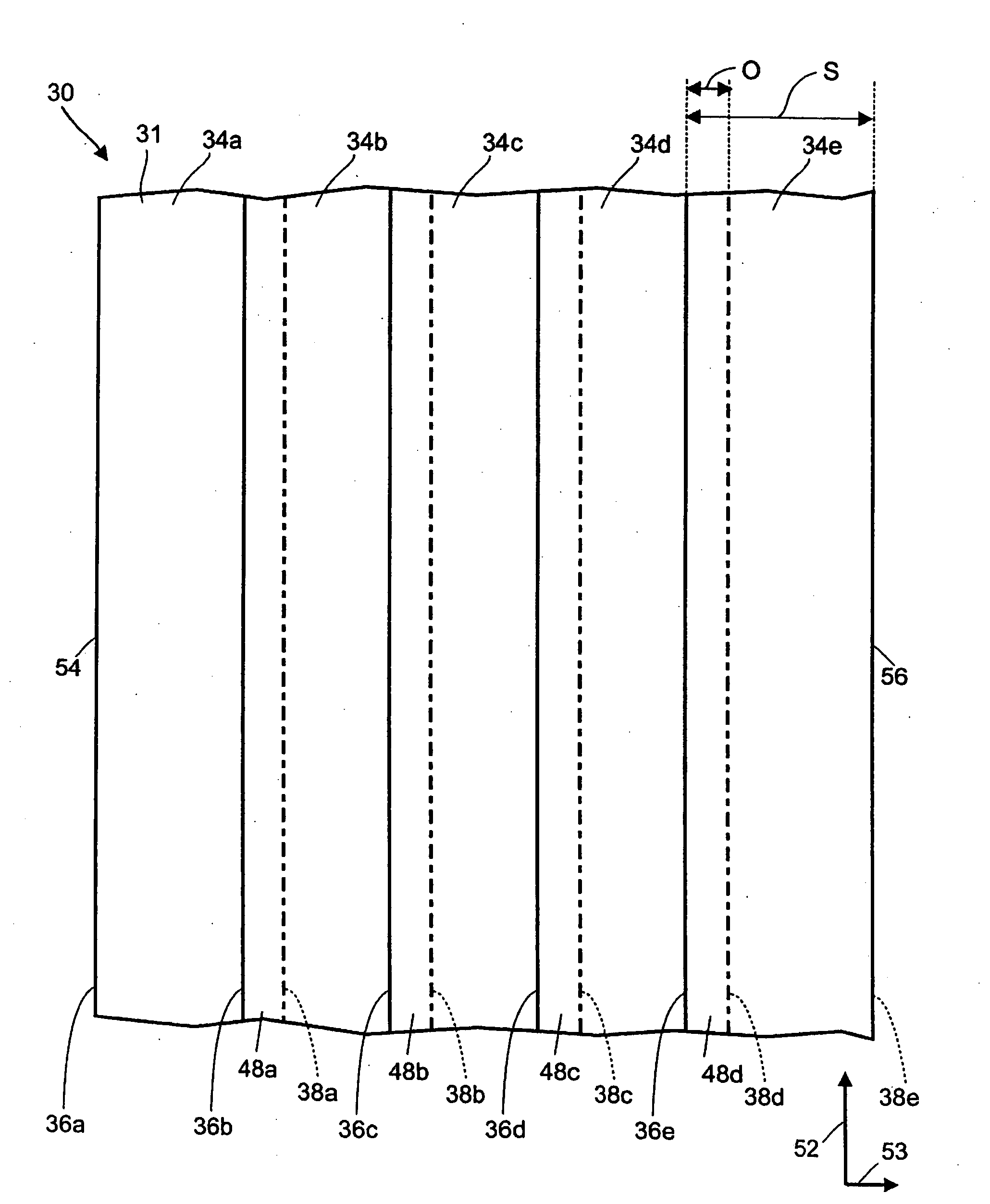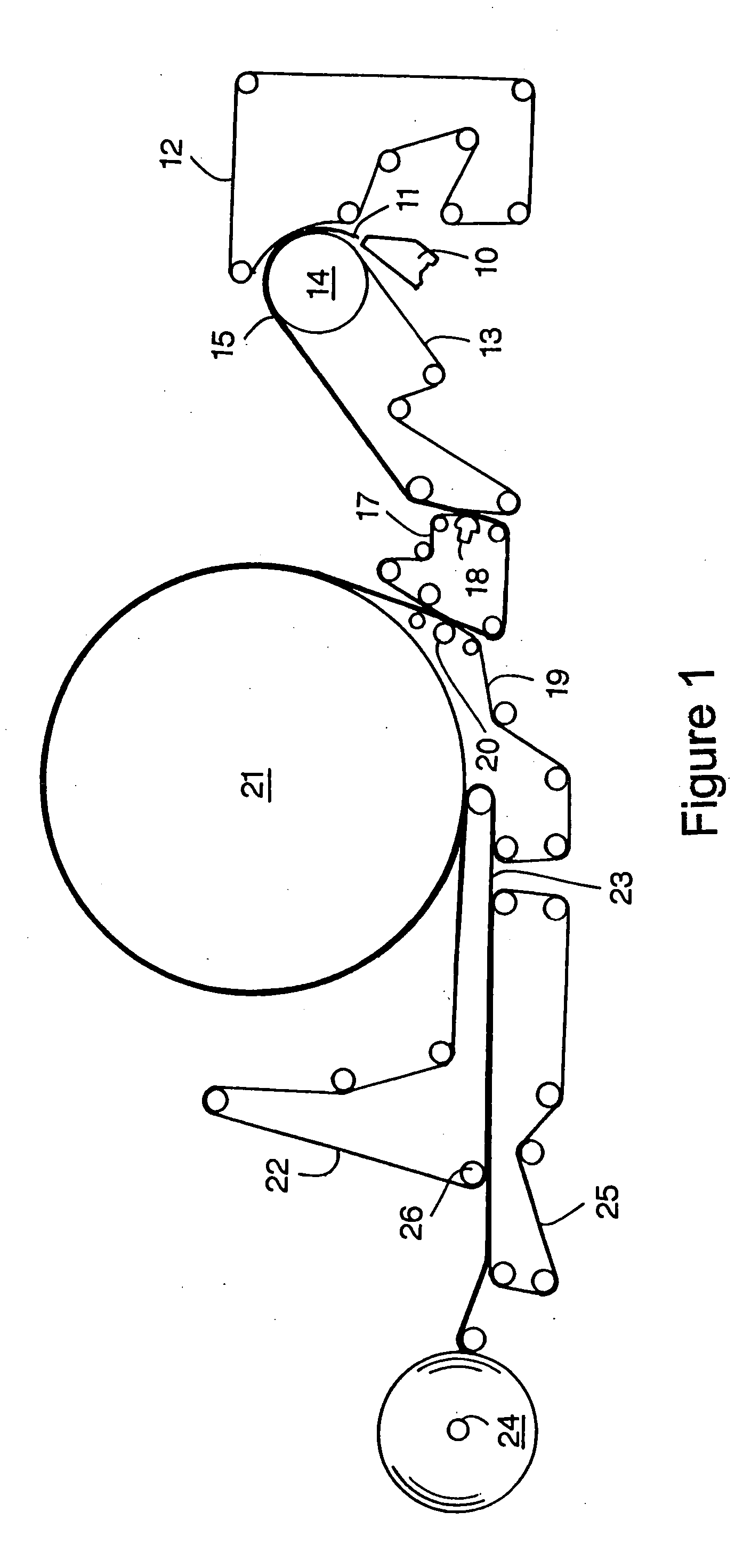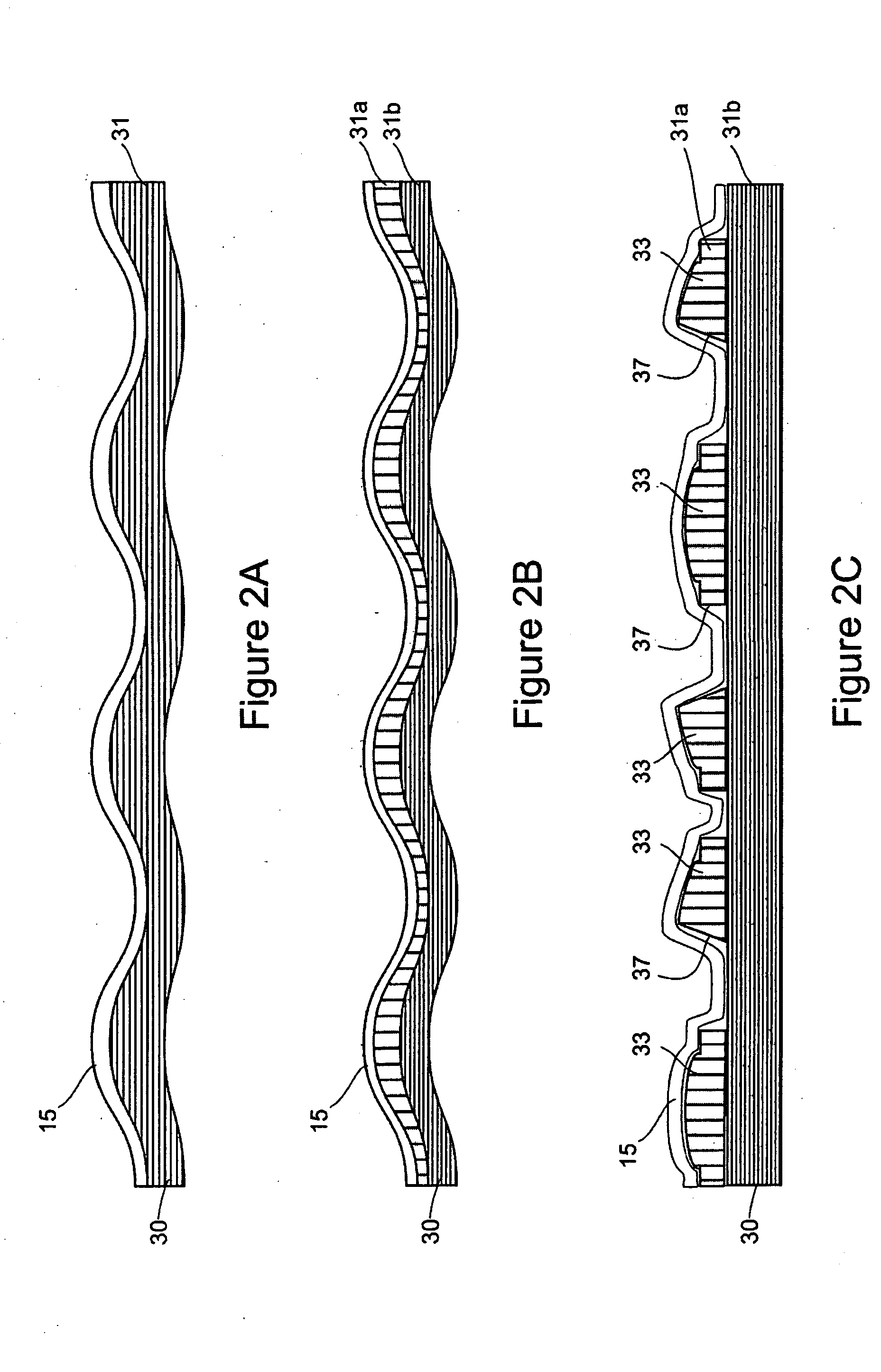Non-woven through air dryer and transfer fabrics for tissue making
a transfer fabric and air dryer technology, applied in the directions of press section, non-fibrous pulp addition, transportation and packaging, etc., can solve the problems of high labor intensity, high cost, and large investment in tissue products, and achieve the effect of improving fabric strength and high base weight regions
- Summary
- Abstract
- Description
- Claims
- Application Information
AI Technical Summary
Benefits of technology
Problems solved by technology
Method used
Image
Examples
example 1
[0158] In order to further illustrate the non-woven tissue making fabrics of the present invention, a laminated two-layer non-woven tissue making fabric was produced with a three-dimensional topography. The nonwoven base fabric comprised a spunbond web made from bi-component fibers with a concentric sheath-core structure. The sheath material comprised Crystar® 5029 Polyethylene Terephthalate (PET) polyester resin (The DuPont Company, Old Hickory, Tenn., USA). The core material comprised HiPERTUF® 92004 Polyethylene Naphthalate (PEN) polyester resin (M&G Polymers USA LLC, Houston, Tex., USA). The sheath to core ratio was about 1:1 by weight. A bicomponent spunbond pilot line shown was used with a forming head having 88 holes per inch of face width, the holes having a diameter of 1.35 mm holes. The polymer was pre-dried overnight in polymer dryers at about 320° F., then extruded at a pack temperature of about 600° F. at a pack pressure of about 980 psig for the core and about 770 psig...
PUM
| Property | Measurement | Unit |
|---|---|---|
| width | aaaaa | aaaaa |
| length | aaaaa | aaaaa |
| Surface Depth | aaaaa | aaaaa |
Abstract
Description
Claims
Application Information
 Login to View More
Login to View More - R&D
- Intellectual Property
- Life Sciences
- Materials
- Tech Scout
- Unparalleled Data Quality
- Higher Quality Content
- 60% Fewer Hallucinations
Browse by: Latest US Patents, China's latest patents, Technical Efficacy Thesaurus, Application Domain, Technology Topic, Popular Technical Reports.
© 2025 PatSnap. All rights reserved.Legal|Privacy policy|Modern Slavery Act Transparency Statement|Sitemap|About US| Contact US: help@patsnap.com



